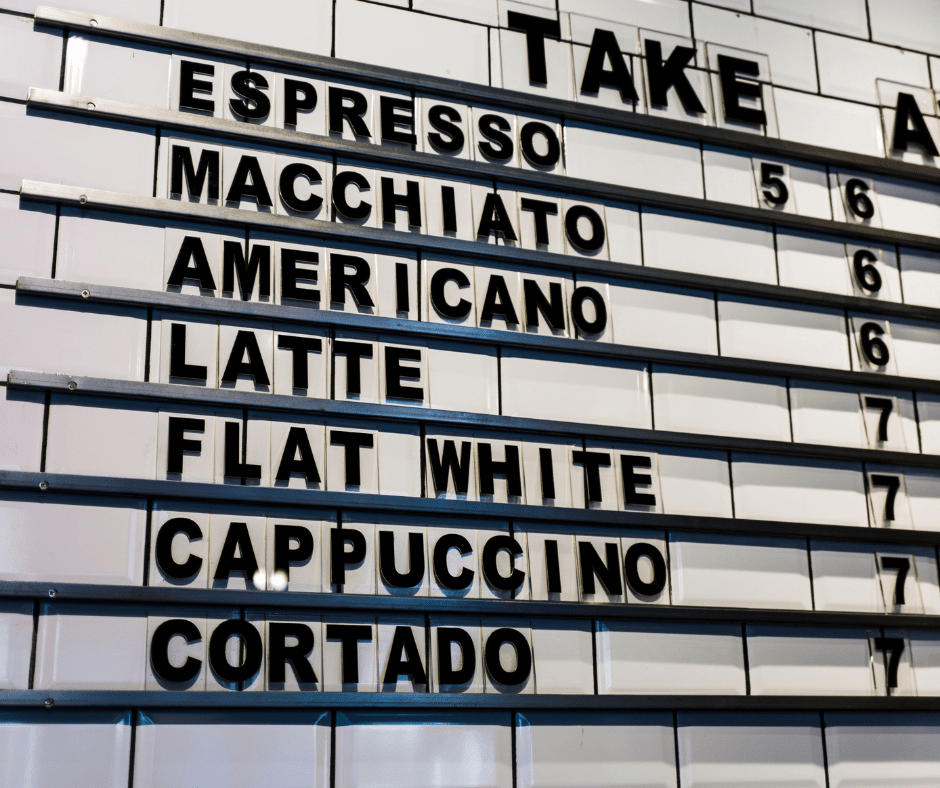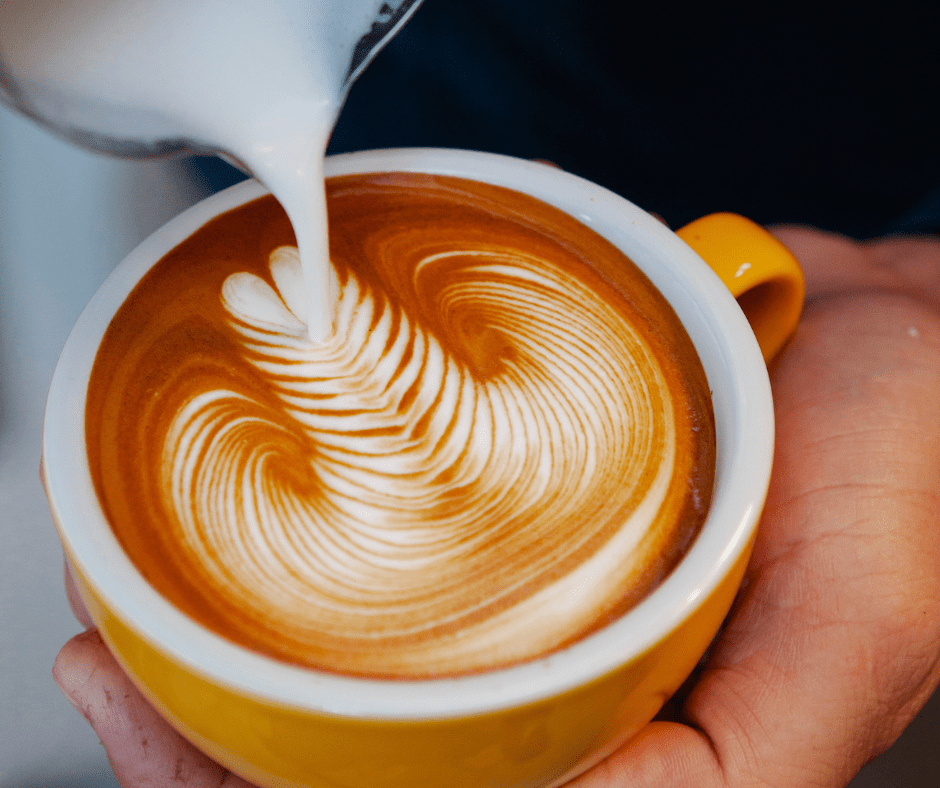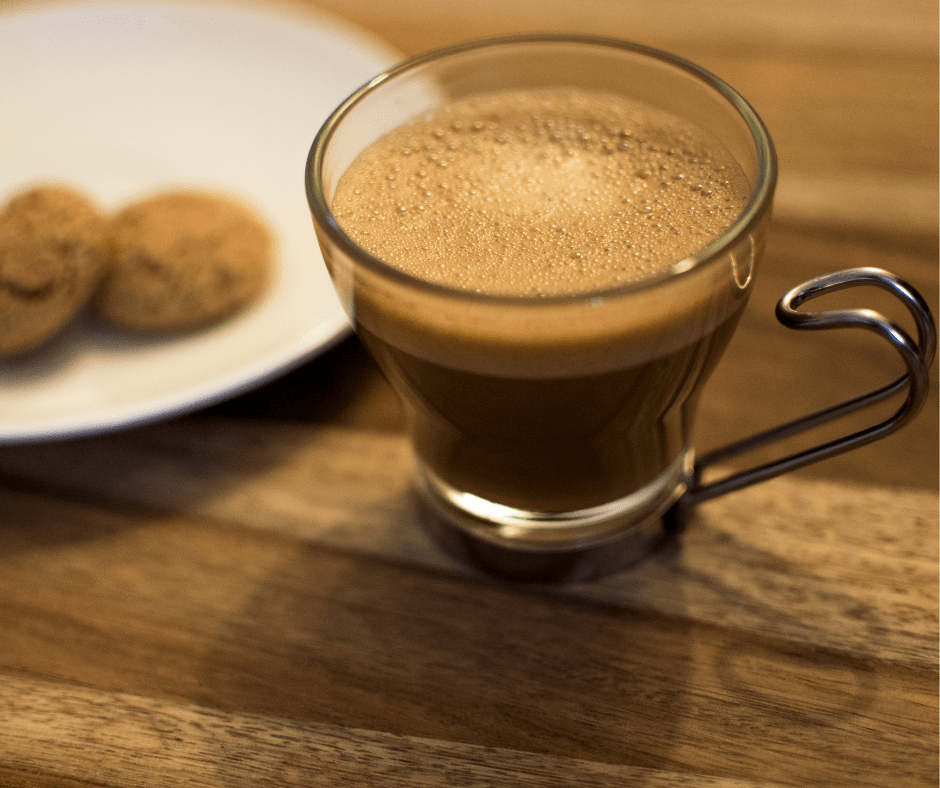Learning the difference between cortado and latte wasn’t a thing before.
Once upon a time, you asked for coffee, and the waiter would ask if you wanted milk and sugar. But those times are over!

Later, the coffee menu was limited to americanos, espressos, cappuccinos, and lattes. However, you’ll find drinks like cortados, macchiatos, and flat whites today. With so many options out there—all of which sound delicious—ordering a coffee has never been more challenging.
If you’re a milk coffee lover, you’ve probably had lattes before. However, a cortado might be your next favorite drink. What’s the difference between the two? Read in detail below.
Table of Contents
Latte: Smooth and Sweet

Latte means milk in Italian. That’s why some baristas in Italy would make fun of you serving a glass of milk if you ask for a “un latte, per favore”.
Originally called “caffè latte” or “caffè e latte” in Italian, it became popular in the US to ask for it as a latte.
The latte has been a part of coffee shop menus for a long time. The Latin drink is made from espresso, diluted with steamed milk, and topped with microfoam. You can choose between 1 to 3 shots of Espresso to adjust strength. It’s the drink of choice for people who don’t like strong coffee.
Lattes are very popular and one of the most ordered coffee drinks worldwide. The reason for their fame is their mellow flavor. The steamed milk gives them a smooth consistency and dilutes the espresso shot. The espresso flavor is reduced, and the milk makes the coffee sweet.
You can also make lattes at home; simply check out our guide to the best espresso machines on the market.
Cortado: Stronger and Richer

The cortado comes from Spain, and it is the drink of choice for people that want a more robust coffee. It’s normally made of equal parts espresso and milk.
While the milk does dilute the espresso, the drink is still longer because the ratio of milk to espresso is equal. Unlike the latte, the cortado contains little to no foam, which allows you to taste the coffee and makes it feel richer.
The cortado is perfect for people who want to dilute an espresso shot but not mellow it entirely. The blend of equal parts milk and water removes the espresso’s bitterness while leaving a bold, intense taste behind.
Cortado vs. Latte: Differences and Similarities
The two drinks are very similar, but some factors ultimately set them apart. They might be made the same way, but their origins and, most importantly, their flavor profiles are different. Here are the similarities and differences between them.
Origin
The cortado and latte may have things in common, but their birthplaces are entirely different. The latte is an Italian drink and comes from the Italian word “caffè e latte” which translates to “coffee and milk”. Once the drink was adopted in America, it was known as “latte”. Today, you’ll find lattes in every coffee shop, made as a blend of coffee, milk, and foam.
Cortado, on the other hand, comes from Spain. In the Spanish language, the word “cortado” translates as “cut.” In essence, the cortado is made by using milk to cut through the harshness of the espresso. In Spain, baristas made cortados by adding a splash of milk to the espresso shot, not enough to dilute it, but just enough to make it less harsh. Today, coffee shops make cortado using either a 1:1 or 1:2 ratio of espresso to steamed milk.
Sizes
The latte is one of the biggest cups of coffee around. A cup of latte can have anywhere from 150 to 200 ml of fluid, which is more than enough for one sitting.
A cortado, on the other hand, is smaller in size. A cortado cup can be anywhere from 90 to 120 ml of milk coffee, making it a popular choice. A latte is a good breakfast coffee—especially for office workers—because the milk there is very filling. However, 150 to 200 ml of milk coffee can be too much at any other time. This makes the cortado the go-to milk coffee to order with all your lunch options.
However, coffee house chains give you size options for your drink too. For example, in Dunkin’ Donuts, you have the small, medium and large, while in Starbucks, you have the tall, grande, and venti.
Body, Milk, and Texture
Both the latte and cortado start from shots of espresso. However, the ratio of milk to coffee makes them so different from one another. A latte is made with a single shot of espresso, but you can ask for two or even more if you wish. The espresso shot— about 2 ounces—is followed up with anywhere from 6 to 8 ounces of steamed milk, depending on the size of the cup.
Finally, the cup is topped with a layer of very light foam. The high amount of milk in the coffee makes it very creamy and sweet and allows baristas to create all sorts of designs on top of the cup.
Normally, a cup of cortado takes equal parts of milk and espresso. Cortados, on the other hand, are made by adding espresso to milk in a 1:1, 1:2, or 1:3 ratio. In Spain, it’s popular to drink cortados without foam. Throughout the world, baristas are using some foam to perform latte art on top.
Since a cortado is made of a balance of espresso and milk, it has a stronger and more balanced profile. The milk doesn’t overpower the espresso, which makes it perfect for people that simply want to avoid the bitterness of coffee. The best part is, unlike in lattes, the espresso flavor is present in every sip.
The cortado and latte require adding milk to espresso, which is why the flavor gets more intense and complex near the end.
Conclusion: Latte vs. Cortado
Milk coffee lovers often need clarification on the latte and cortado. However, the choice is straightforward. If you like a thick, foamy consistency to your coffee, and want something sweet and mild, go for a latte.
If you want a kick of that espresso flavor and aren’t a foam fan, go for a cortado. Both drinks are delicious, but they each have their distinct charm. No two coffee drinkers are the same, and your choice makes all the difference at the end of the day.


